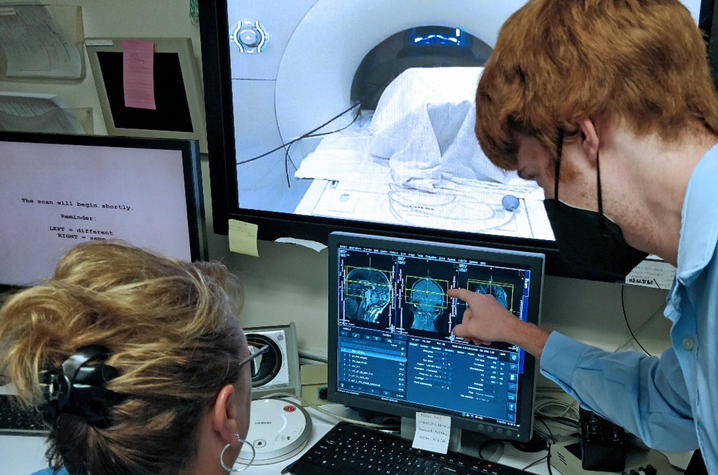UK Study: Healthy Dietary Intake Associated With Lower Brain Iron, Better Cognition in Older Adults

LEXINGTON, Ky. (Aug. 26, 2021) — Research conducted at the University of Kentucky College of Medicine suggests that higher intake of specific nutrients is associated with lower brain iron concentration and better cognitive performance in older adults.
The study was recently published in the Neurobiology of Aging and highlights the important balance of non-heme iron for optimal neuronal function. Excess non-heme brain iron has been associated with neurological diseases such as multiple sclerosis and Alzheimer’s disease. High levels of brain iron can also be seen in normal aging, where they have been correlated with poor cognitive performance.
A key question is whether age-related increases in brain iron and related cognitive declines can be slowed by environmental factors, such as healthy dietary intake. To explore this question, the research team evaluated the relationship between nutritional intake, brain iron and cognitive performance in a group of healthy, older adults between 61 and 86 years old.
The team was able to address the question using a variety of methods including computer assessments to quantify working memory performance, questionnaires to obtain nutrition information and an in vivo MRI technique called quantitative susceptibility mapping to measure iron concentration in brain tissue.
Consistent with previously published work, the results indicated that increasing age was associated with higher levels of brain iron concentration and poorer working memory performance. However, those older adults with high dietary intake of nutrients commonly found in nuts, soybeans, olive oils, and fish (such as vitamin E, lysine, DHA omega-3 and LA omega-6 PUFA) tended to have lower brain iron and better working memory performance than expected for their age.
“Our results suggest that these nutrients may offer protection against brain iron accumulation and cognitive decline in older adults,” said Valentinos Zachariou, Ph.D., a researcher in the UK Department of Neuroscience and first author of the publication.
“Our promising correlational findings provide motivation for follow-up clinical trials to assess whether specific nutrition can slow brain iron accumulation in older adults,” said Brian Gold, Ph.D., professor of neuroscience and principal investigator of the study.
In addition to Zachariou and Gold, several other key researchers from UK and other institutions contributed to the research, including Edward Hall, Ph.D., Christopher Bauer, Ph.D., and Elayna Seago in the UK Department of Neuroscience, D. Allan Butterfield, Ph.D., in the UK College of Arts and Sciences’ Department of Chemistry, and Georgia Panayiotou, Ph.D., with the Department of Psychology at the University of Cyprus.
This work was funded by the National Institute on Aging and the National Institute of General Medical Sciences.
Research reported in this publication was supported by the National Institute on Aging of the National Institutes of Health under Award Numbers R01AG055449, R01AG068055 and P30 AG028383; National Institute of General Medical Sciences of the National Institutes of Health under Award Number S10OD023573. The content is solely the responsibility of the authors and does not necessarily represent the official views of the National Institutes of Health.
As the state’s flagship, land-grant institution, the University of Kentucky exists to advance the Commonwealth. We do that by preparing the next generation of leaders — placing students at the heart of everything we do — and transforming the lives of Kentuckians through education, research and creative work, service and health care. We pride ourselves on being a catalyst for breakthroughs and a force for healing, a place where ingenuity unfolds. It's all made possible by our people — visionaries, disruptors and pioneers — who make up 200 academic programs, a $476.5 million research and development enterprise and a world-class medical center, all on one campus.




